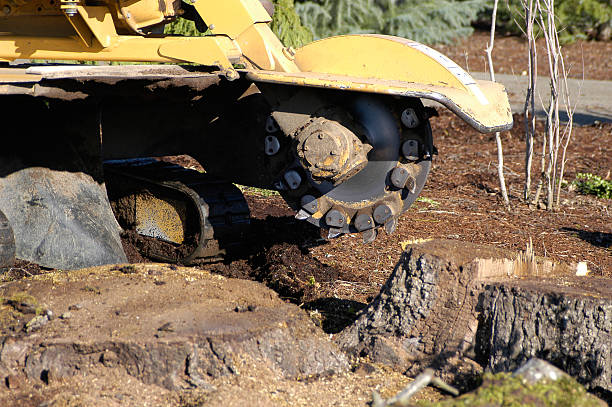When it comes to tree removal, the process doesn’t end with the felling of the tree. That is just the beginning. The stump that remains after the tree has been cut down can be an eyesore and a potential hazard. That’s where stump grinding comes in. But what exactly is stump grinding, and why is it highly recommended after tree removal? The answer lies in the numerous benefits it provides and the seamless process it entails. So, if you’re curious about how stump grinding can transform your landscape and ensure safety, you’re in for a treat.
Benefits of Stump Grinding
Stump grinding offers numerous benefits for property owners following tree removal. One of the primary advantages of stump grinding is the restoration of aesthetic appeal to the property. By removing unsightly stumps, property owners can enhance the overall appearance of their landscape. Stumps left behind after tree removal can be an eyesore and can detract from the beauty of the surroundings. Stump grinding eliminates this problem, allowing property owners to enjoy a clean and visually appealing landscape.
Moreover, stump grinding also prevents potential hazards. Stumps can pose risks to people and property, especially if they are hidden by grass or vegetation. They can cause tripping accidents and damage to lawnmowers, vehicles, or other equipment. By grinding the stumps down to below ground level, property owners eliminate these hazards and create a safer environment.
Furthermore, stump grinding promotes healthy tree growth. When a tree is removed, the stump can act as a breeding ground for pests and diseases that can harm nearby trees and plants. By grinding the stump, property owners prevent the spread of these pests and diseases, ensuring the health and vitality of their landscape.
The Stump Grinding Process
After understanding the benefits of stump grinding, it is important to delve into the process to comprehend how it can be fully executed. Stump grinding is a method used to remove tree stumps from the ground by using a specialized machine called a stump grinder. The process begins with assessing the stump’s size, location, and any potential obstacles that may hinder the grinding process.
Once the assessment is complete, the stump grinder is positioned near the stump. A trained professional then operates the machine, carefully grinding the stump into small wood chips using a rotating cutting disk. The grinder is gradually moved across the stump, ensuring that the entire stump is ground down to a predetermined depth below the ground level.
During the grinding process, safety precautions are taken to protect nearby structures, landscape features, and individuals. The wood chips generated during grinding are typically left on-site or can be removed upon request. The resulting wood chips can be repurposed as mulch or used as compost material.
After the stump grinding process, the remaining wood chips can be used to fill the hole left by the stump. This ensures a level surface and eliminates any trip hazards. Overall, the stump grinding process is an effective and efficient method of removing tree stumps, eliminating the need for manual labor and reducing the risk of regrowth.

